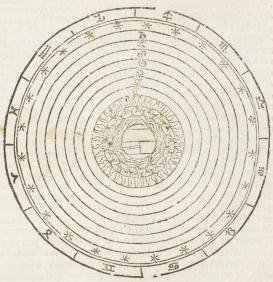This book project (to be published by Edition Open Access, in the Edition Open Sources book series of the MPIWG and the University of Oklahoma) aims to propose a new edition of the commentaries on Sacrobosco’s Tractatus de sphaera by Prosdocimo de’ Beldomandi (1370/1380–1428) and Bartolomeo Vespucci (1479–1527). These authors were both professors of astronomy and astrology at the University of Padua, which was one of the leading universities during the early modern period with respect to the development and promotion of the physical-mathematical sciences. While Prosdocimo de’ Beldomandi was the first professor of astrology to figure in the rolls of the University of Padua, Bartolomeo Vespucci, the nephew of the navigator Amerigo Vespucci, studied at Padua at the same time as Copernicus, teaching astronomy in this context shortly thereafter. His commentary on Sacrobosco, which was first written around 1506 in the form of annotations to the commentary on Sacrobosco’s De Sphaera by Francesco Capuano de Manfredonia (fl. fifteenth century), was collated with Beldomandi’s commentary by Luca Gaurico in 1531. Focusing, in the analysis of these commentaries, on their interpretation of the cosmological content of the first book of the Sphaera (definition of the sphere, number, order, and disposition of the celestial spheres, mutual disposition of the sublunary elements, etc.), the edition and presentation of these commentaries, which were written nearly one century apart but read conjointly after 1531, aims to give a wider perspective on the continuities and evolution of the cosmological ideas that were transmitted through the teaching of Sacrobosco’s theory of the sphere in the University of Padua from the fifteenth to the sixteenth century.

The structure of Sacrobosco’s cosmos in Beldomandi’s commentary on the Sphaera (Venice, Giunta, 1531, 3v). Source: Library of the Max Planck Institute for the History of Science, Berlin.
Project
(2019)
The Commentaries on Sacrobosco’s Sphaera by Prosdocimo de’ Beldomandi and Bartolomeo Vespucci (1531)
- Angela Axworthy
